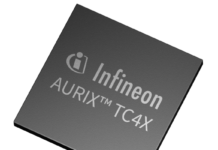
Driven by emerging applications in ADAS and well positioned for autonomous cars, radar technology is evolving very fast”, comments Yole Développement (Yole) in its latest technology & market report, Radar technologies for automotive 2018. According to Yole’s RF Electronics team, the radar chip market is showing a 22.9% CAGR between 2016 and 2022, in value.
Automotive has known many unexpected development for the past two years. And as it has always been the case, it is the safety which keeps driving this market. Most of the players, OEMs and suppliers are now investing in technologies to develop the autonomous vehicles: automation accelerates, without doubt, the development of radar complementary with LiDAR and camera module…
Automatic emergency braking, adaptive cruise control, and lane-change assist are some examples of these new applications. Spurred by the New Car Assessment Program, OEMs are designing cars with numerous sensors that enable applications like these. And since most of these new applications are safety-related, the sensors must be highly accurate. This means very tight specifications for object detection and classification, as well as being ultra-reliable: operable in every weather condition, in poor lighting, near or far, and with a wide field of view. Radar technology is well-suited to fulfill most of these requirements. Yole says “most” because object classification is not currently possible with radar, but certain companies are moving quickly to unlock this capability in imaging radar.

Radar has an impressive technology roadmap allowing for huge resolution improvement as well as device miniaturization and cost reduction.
“At Yole, we believe radar technology will achieve an outstanding penetration rate in car sensors complementing camera devices”, explains Cédric Malaquin, Technology & Market Analyst at Yole.“Despite the small global car sales growth reaching almost 3% until 2022, we expect an average growth rate of 23% for radar moule sales, and an average growth rate of 22.9% as well, for radar chip sales over the next five years”.
According to Yole’s analyst, autonomous driving will be the next long-term driver for radar technology growth.
Automotive radar operates at:
• 24 GHz in the unlicensed ISM band for short-range (up to 30m) applications including blind-spot detection, lane-change assist for example
• 77 GHz in the W band for long-range (up to 250m) applications including adaptive cruise control, automated emergency braking.
However, this heterogenic approach might generate interference issues with an increasing number of radar-equipped cars. So a more unified platform called 79 GHz has been proposed, based on the 77 GHz frequency with its 5 GHz of available bandwidth from 76 – 81 GHz. 79 GHz offers other advantages too: it improves radar resolution to enable better target separation, while reducing antenna and high-frequency circuit size…
In this new report, the “More than Moore” market research and strategy consulting proposes an overview of the radar solutions developed for the automotive sector. Analysts detail the different modules involved in standards and autonomous systems as well as related roadmaps and forecasts for both high-end and middle-end cars.
This report is covering the overall radar technologies as well as market evolution with a focus on the competitive landscape. It is a smart combination of Yole’s knowledge and System Plus Consulting’s technical expertise. As part of Yole Group of Companies, System Plus Consulting proposes a collection of reverse engineering & costing reports focused on the radar modules and related architectures. The company is offering a deep understanding of the technology mix and positioning of the numerous Tier 1 and semiconductor players. Autoliv, Continental, Delphi and Robert Bosch… are part of them (More information).
What is the status of radar technologies? Under the dynamic automotive industry, how will radar solutions evolve? Who are the leaders?… Yole Group of Companies invites you to discover the latest technical and market challenges of this industry.
For more information click here


















